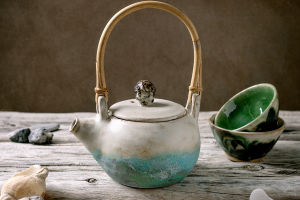As our little ones grow, their clothes seem to multiply overnight. If we don't have an efficient system, we often find ourselves rummaging through piles of clothes, only to pull out something too small or unsuitable for the season.
Through trial and error, we have found a hassle-free storage method that keeps everything tidy and accessible. Let’s dive in!
Step One: Sort Before Storing
Before organizing, we must first categorize our baby’s clothes and accessories. By understanding what we have, we can create a system that makes dressing our little one effortless. The key is to separate clothes by type and size so we can quickly grab what we need without making a mess.
Step Two: Hanging Clothes Saves Time
Folding tiny baby clothes can be time-consuming and, let’s be honest, frustrating. Instead, we have found that hanging as many items as possible saves time and keeps things neat. A simple swipe through the hangers lets us find what we need without disturbing the rest of the wardrobe.
Must-Have Storage Items
To make our storage system even more efficient, here are six essential items that help keep everything in order.
1. Velvet Children's Hangers
A sturdy and well-designed hanger can make a big difference. Regular adult hangers are too big, and many baby hangers are too small. Velvet children's hangers provide the perfect balance. Their non-slip surface prevents clothes from falling off, and their curved shape ensures that the shoulders of our baby’s clothes remain intact. Plus, they grow with our child, making them a long-term investment.
2. Stainless Steel Hanging Clips
For small accessories like bibs, hats, and mittens, stainless steel hanging clips are a game changer. They securely hold lightweight items and can be hooked onto a rod or rack for easy access. Compared to S-hooks, these clips provide a firmer grip, so we don’t have to worry about items slipping off.
3. Fabric Storage Boxes
Fabric storage boxes are lightweight, breathable, and easy to fit into any wardrobe. Unlike hard plastic bins, they offer flexibility, allowing us to maximize space. With different size options available, we can mix and match to create a customized storage solution for socks, onesies, and other baby essentials.
4. Multi-Drawer Storage Cabinet
For small spaces, a compact multi-drawer cabinet is a lifesaver. Instead of cluttering our wardrobe, we can dedicate a drawer to each category—onesies, socks, pajamas, and more. Having a designated space for frequently used items makes it easier to keep things tidy and accessible.
5. Hanging Organizer for Small Accessories
If we have limited shelf space, wall-mounted or hanging organizers can help. A simple paper towel rack can be repurposed to hold baby headbands, scrunchies, or pacifiers. This small trick keeps accessories organized and within reach.
6. Label Maker for Easy Organization
To keep everything in order, labeling is key. A good label maker allows us to print custom labels for drawers, boxes, and shelves. This way, even family members unfamiliar with the system can easily find and put away items correctly.
Encouraging Our Little Ones to Join In
As our babies grow, we can gradually introduce them to simple organizing habits. Hanging their own clothes or placing socks in a designated box can be a fun and rewarding activity. To make it easier, we can use stickers or color-coded labels to indicate different storage areas. This not only keeps things tidy but also fosters a sense of responsibility.
Final Thoughts
An organized baby wardrobe doesn’t happen overnight, but with a few smart tools and strategies, we can simplify the process. The key is to keep things practical and efficient. And remember, babies grow quickly! Regularly sorting out clothes that no longer fit ensures that our storage space remains uncluttered and functional.
Lykkers, have you tried any of these storage solutions? Share your favorite baby clothing organization tips with us!


